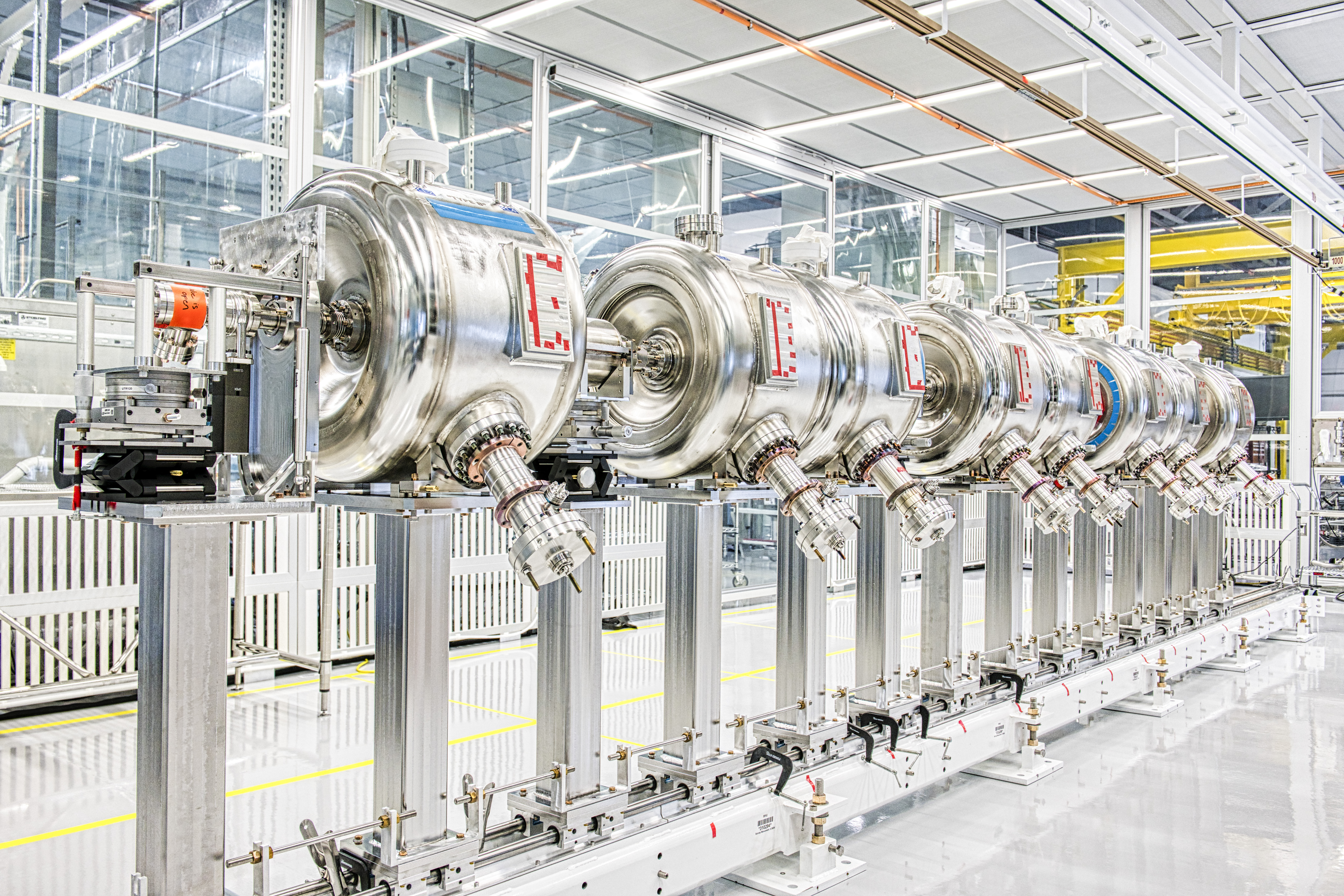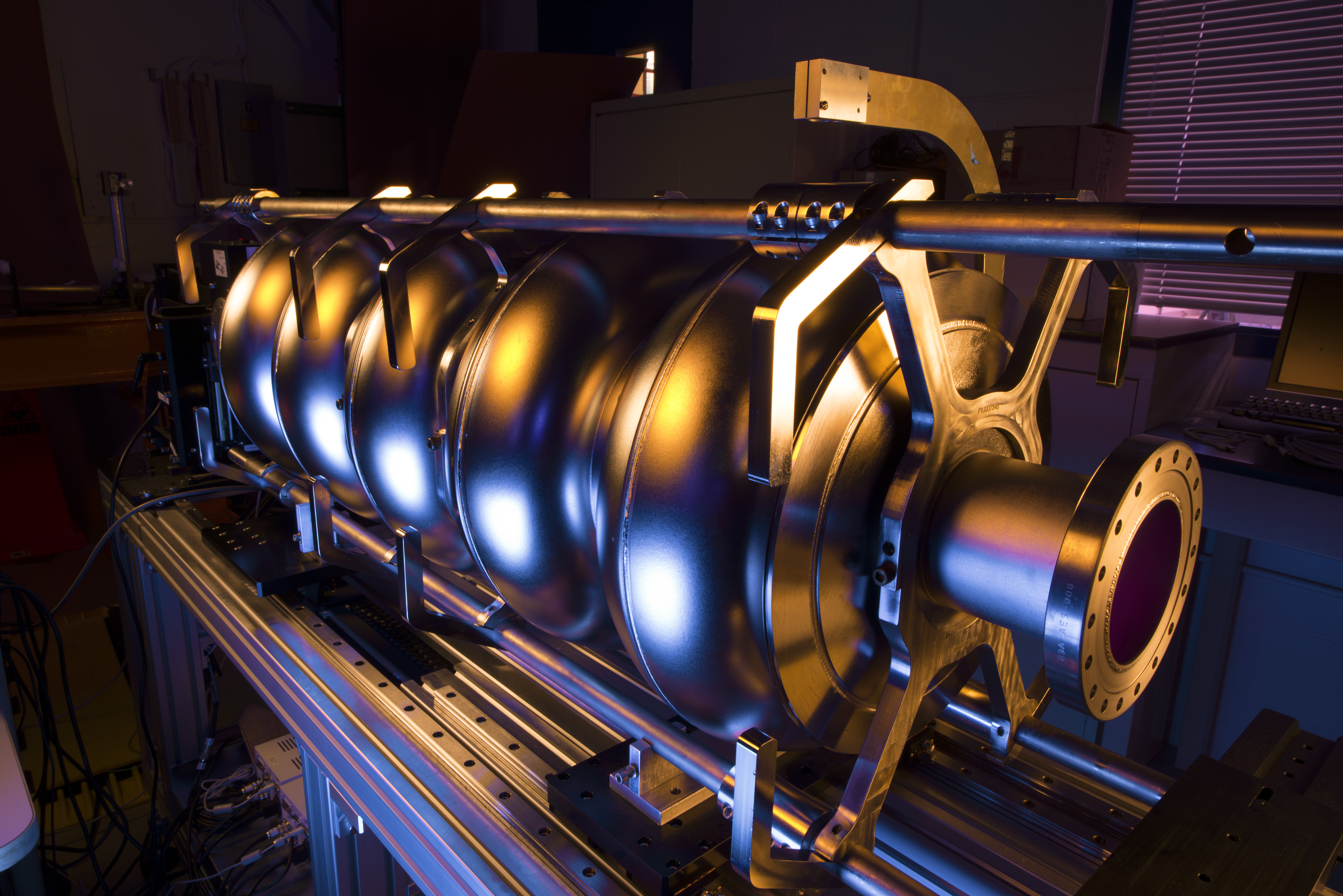RF Superconductivity for Accelerators

Introduction
A game changing technology for accelerator design and operation is the use of radio frequency superconductivity. It allows much more energy efficient and also much more powerful accelerators to be constructed and utilized. The science and technology of radio frequency (RF) superconductivity involves the application of superconductors to RF devices. The Stony Brook University course PHY 543 (RF Superconductivity for Accelerators) is about the application of RF superconductivity to the acceleration of charged particles (electrons, positrons, protons, ions).
Why is RF Superconductivity important for accelerator design and operation? While superconductors are lossless at DC currents, they incur losses when AC currents are applied. However, the electrical resistivity at RF frequencies is ultra-low. For example, RF resonant cavities made of niobium and cooled down to 2 K have surface resistance of 5-6 orders of magnitude smaller than that of copper. This and other properties are exploited to design and construct high-performance particle accelerators.

Future Outlook
Many existing and future particle accelerators worldwide use or plan to use SRF technology.
Examples in the USA: RHIC and EIC at BNL, CEBAF at Jefferson Lab, SNS at ORNL, CESR at Cornell University, PIP-II at Fermilab, ATLAS and ANL, LCLS-II/LCLS-II-HE at SLAC.
Examples worldwide: LHC, FCC-ee, and FCC-hh at CERN, E-XFEL at DESY (Germany), SuperKEKB at KEK (Japan), SPIRAL-2 in France, ESS in Sweden, several project in China and India.
In addition to the applications of the SRF science in particle accelerators, the SRF technology is gaining more and more popularity in the rapidly evolving field of quantum computing. The SRF cavities can be used as superconducting qubits for scalable quantum information processing.
The field of RF superconductivity is very active. The SRF technology is the technology of choice for many types of modern particle accelerators. However, there are still many problems that need attention and careful investigation. This will require better understanding of fundamentals and new technological advances. As accelerator application demands continue to increase (higher energy, higher luminosity, brighter beams, more efficient accelerators, …) there will be no shortage of new challenges to tackle in the future.
